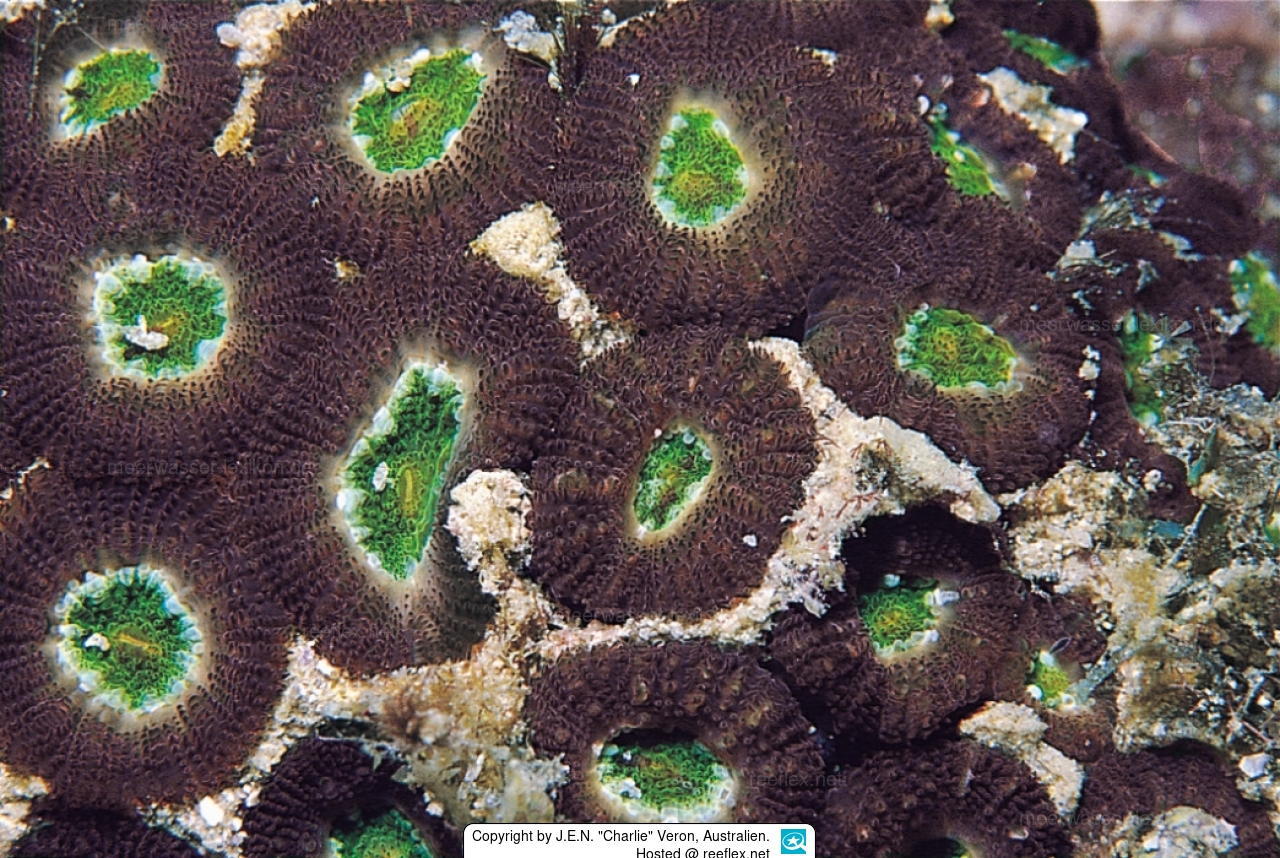Info
“From Veron, J.E.N. Corals of the World.”
Hodgson, 1985
Characters: Colonies are encrusting and are less than 0.3 metres across. Corallites are 5-9 millimetres diameter and have thick fleshy mantles. Septa are in 3 or 4 distinct orders. Primary septa have 1 or 2 pointed teeth above the wall; this can sometimes be seen underwater. Paliform lobes are weakly developed. ?Groove and tubercle? formations are usually well developed. Sand, often containing turf algae, is usually compacted between the corallites and is probably held there by secretions of polychaete worms.
Colour: Dark red (which may photograph dark brown as below), with green or white oral discs.
Habitat: Shallow water, especially adjacent to sandy substrates.
Abundance: Rare.
Similar species: Blastomussa wellsi
Synonyms:
Montastraea multipunctata Hodgson, 1985
Montastrea multipunctata Hodgson, 1985
Phymastrea multipunctata (Hodgson, 1985)
Hodgson, 1985
Characters: Colonies are encrusting and are less than 0.3 metres across. Corallites are 5-9 millimetres diameter and have thick fleshy mantles. Septa are in 3 or 4 distinct orders. Primary septa have 1 or 2 pointed teeth above the wall; this can sometimes be seen underwater. Paliform lobes are weakly developed. ?Groove and tubercle? formations are usually well developed. Sand, often containing turf algae, is usually compacted between the corallites and is probably held there by secretions of polychaete worms.
Colour: Dark red (which may photograph dark brown as below), with green or white oral discs.
Habitat: Shallow water, especially adjacent to sandy substrates.
Abundance: Rare.
Similar species: Blastomussa wellsi
Synonyms:
Montastraea multipunctata Hodgson, 1985
Montastrea multipunctata Hodgson, 1985
Phymastrea multipunctata (Hodgson, 1985)







 Dr. John Edward Norwood "Charlie" Veron, Australien
Dr. John Edward Norwood "Charlie" Veron, Australien










